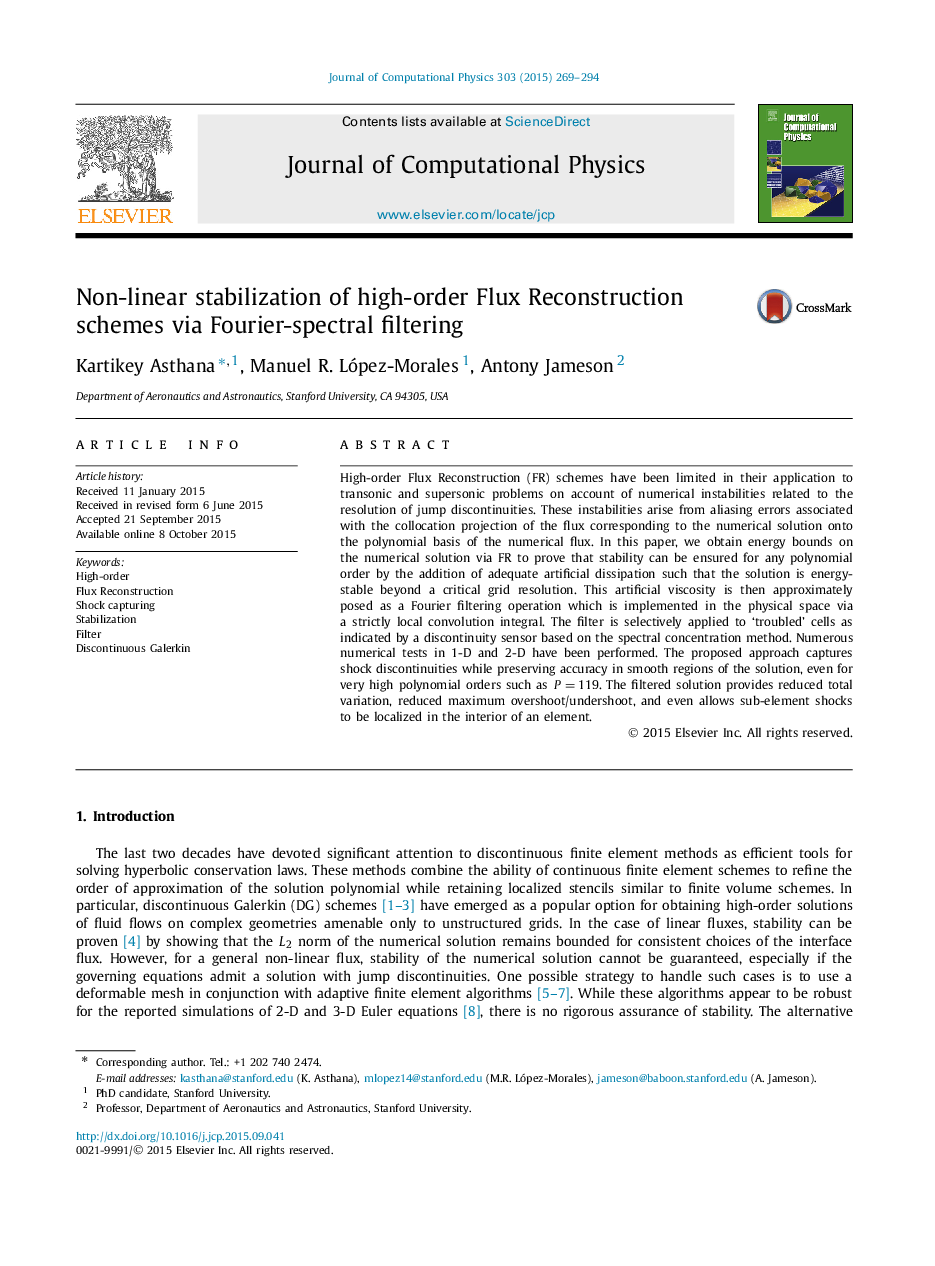| Article ID | Journal | Published Year | Pages | File Type |
|---|---|---|---|---|
| 6931012 | Journal of Computational Physics | 2015 | 26 Pages |
Abstract
High-order Flux Reconstruction (FR) schemes have been limited in their application to transonic and supersonic problems on account of numerical instabilities related to the resolution of jump discontinuities. These instabilities arise from aliasing errors associated with the collocation projection of the flux corresponding to the numerical solution onto the polynomial basis of the numerical flux. In this paper, we obtain energy bounds on the numerical solution via FR to prove that stability can be ensured for any polynomial order by the addition of adequate artificial dissipation such that the solution is energy-stable beyond a critical grid resolution. This artificial viscosity is then approximately posed as a Fourier filtering operation which is implemented in the physical space via a strictly local convolution integral. The filter is selectively applied to 'troubled' cells as indicated by a discontinuity sensor based on the spectral concentration method. Numerous numerical tests in 1-D and 2-D have been performed. The proposed approach captures shock discontinuities while preserving accuracy in smooth regions of the solution, even for very high polynomial orders such as P=119. The filtered solution provides reduced total variation, reduced maximum overshoot/undershoot, and even allows sub-element shocks to be localized in the interior of an element.
Related Topics
Physical Sciences and Engineering
Computer Science
Computer Science Applications
Authors
Kartikey Asthana, Manuel R. López-Morales, Antony Jameson,
